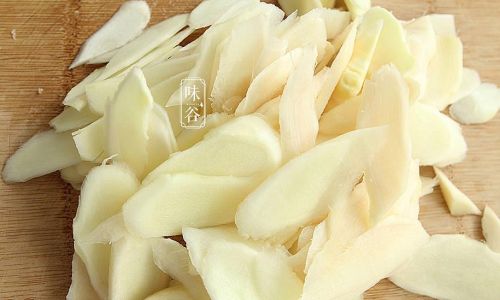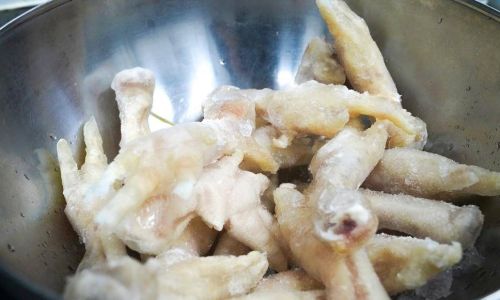Table of content
Introduction
Soybean sprouts, also known as bean sprouts or tofu sprouts, are a popular ingredient in various cuisines worldwide. They are not only nutritious but also versatile, making them an excellent addition to salads, stir-fries, soups, and more. However, preserving soybean sprouts can be challenging due to their delicate nature and high moisture content, which makes them susceptible to spoilage. In this article, we will explore various methods for effectively preserving soybean sprouts to ensure they remain fresh, crisp, and ready to use whenever you need them.
Understanding Soybean Sprouts
Before diving into preservation techniques, it’s crucial to understand the basics of soybean sprouts. Soybean sprouts are germinated soybeans that have been allowed to sprout for a few days until they develop small, edible shoots. This process increases their nutritional value, particularly in vitamins and minerals. However, it also makes them highly perishable.

Freshly sprouted soybeans are typically stored in the refrigerator, where they can last for a few days. Beyond this, proper preservation techniques are necessary to extend their shelf life.
Initial Preparation for Preservation
Before preserving soybean sprouts, it’s essential to prepare them correctly. Here are some initial steps to follow:
-
Rinsing: Thoroughly rinse the sprouts under cold running water to remove any dirt, debris, or hulls that may have adhered during the sprouting process.
-
Draining: After rinsing, drain the sprouts thoroughly. Excess water can promote mold growth and reduce shelf life. Use a clean kitchen towel or paper towels to blot away any remaining moisture.
-
Inspection: Carefully inspect the sprouts for signs of mold, discoloration, or off odors. Discard any sprouts that do not appear fresh.

-
Blanching (Optional): Blanching can help inactivate enzymes that cause spoilage and kill any surface microorganisms. To blanch, submerge the sprouts in boiling water for about 30 seconds, then immediately plunge them into ice water to stop the cooking process. Pat them dry before proceeding with preservation.
Methods for Preserving Soybean Sprouts
Refrigeration
Refrigeration is the simplest and most common method for preserving soybean sprouts. Here’s how to do it:
- Storage Container: Use an airtight container with a good seal to prevent moisture loss and contamination.
- Paper Towels: Line the container with paper towels to absorb any excess moisture. Place the sprouts in a single layer on top of the paper towels.
- Layering: If you have a large quantity, you can layer the sprouts with paper towels between each layer.
- Seal and Store: Seal the container tightly and store it in the refrigerator’s crisper drawer, where humidity is higher.
- Shelf Life: Properly refrigerated sprouts can last up to a week.
Freezing
Freezing is another effective method for long-term preservation. However, it’s important to note that frozen sprouts will have a softer texture when thawed, making them more suitable for cooked dishes rather than salads.
- Blanching: As mentioned earlier, blanching is crucial for freezing to inactivate enzymes and retain color.
- Ice Water Bath: After blanching, plunge the sprouts into an ice water bath to stop the cooking process immediately.
- Drying: Drain and pat the sprouts dry thoroughly to prevent freezer burn.
- Freezer Bags: Place the sprouts in freezer bags, removing as much air as possible before sealing.
- Labeling: Label the bags with the date and contents.
- Freezing: Store the bags in the freezer. Frozen sprouts can be kept for up to 6 months.
Dehydration
Dehydrating soybean sprouts is a great way to preserve them for long-term storage while retaining most of their nutritional value. Dehydrated sprouts can be rehydrated before use.
- Dehydrator: Use a food dehydrator set to a temperature of around 135°F (57°C). Spread the sprouts in a single layer on the dehydrator trays.
- Air Drying: Alternatively, you can air-dry the sprouts in a well-ventilated area, but this method is slower and requires more attention to prevent mold.
- Dryness Check: Dehydrate until the sprouts are brittle and break easily when bent. This can take several hours to a day depending on the method and humidity levels.
- Storage: Store the dehydrated sprouts in airtight containers or vacuum-sealed bags in a cool, dark place. They can last for up to a year.
Pickling
Pickling soybean sprouts in a vinegar-based solution not only preserves them but also adds a tangy flavor. This method is particularly suitable for those who enjoy pickled vegetables.

- Brine Preparation: Combine vinegar, water, salt, and sugar in a pot and bring to a boil. Adjust the proportions to taste, but a common ratio is 1 part vinegar to 2 parts water, with a small amount of salt and sugar.
- Packing: Pack the sprouts into clean, sterile jars.
- Pouring Brine: Pour the hot brine over the sprouts, ensuring they are fully submerged.
- Sealing: Seal the jars tightly and allow them to cool. Once cooled, refrigerate.
- Shelf Life: Pickled sprouts can be stored in the refrigerator for several months.
Fermentation
Fermenting soybean sprouts is a traditional preservation method that enhances their flavor and nutritional profile by introducing beneficial bacteria.
- Salt Brine: Prepare a salt brine solution (usually around 2-3% salt concentration).
- Packing: Pack the sprouts into a clean, non-reactive container (such as a ceramic crock or glass jar).
- Submerging: Pour the salt brine over the sprouts, ensuring they are fully submerged. Use a weight to keep them down if necessary.
- Covering: Cover the container with a cloth or loose-fitting lid to allow gas exchange.
- Fermentation: Ferment at room temperature for several days to a week, checking daily for taste and texture.
- Refrigeration: Once the desired flavor is achieved, transfer the fermented sprouts to the refrigerator to slow further fermentation.
Conclusion
Preserving soybean sprouts effectively requires understanding their delicate nature and choosing the right preservation method based on your needs. Refrigeration is the simplest and most accessible option for short-term storage, while freezing, dehydration, pickling, and fermentation offer longer-term solutions. Each method has its own benefits and considerations, so choose the one that best suits your preferences and circumstances. With proper preservation techniques, you can enjoy fresh, crisp soybean sprouts throughout the year.





0 comments